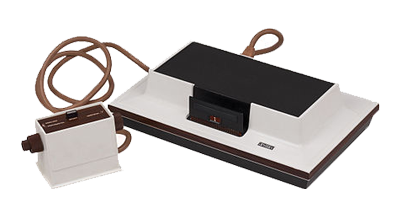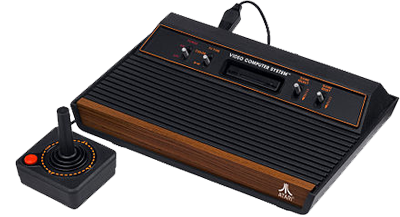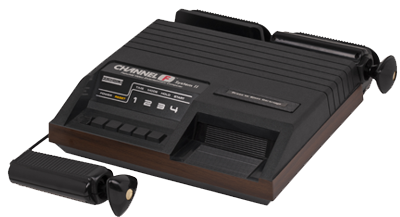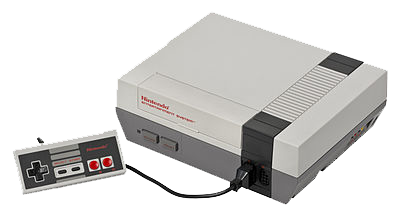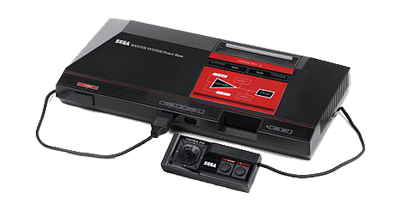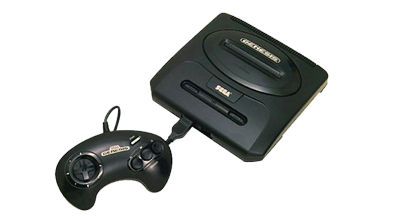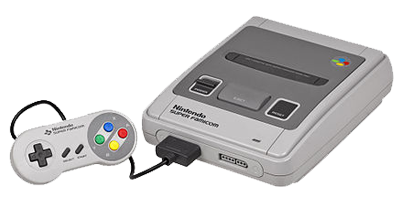Console Generations
Video game console
A video game console is an electronic processing device created for playing videogames. In the period 1968-1991, video game consoles included the home video game consoles, the handheld game consoles and dedicate consoles. In this period video game console moved from the first to the fourth generation.
First generation
The first generation of videogame consoles began with the Magnavox Odyssey, created by Ralph Baer in 1968. This generation would last until 1977, the year known as the "video game crash of 1977". After then microprocessor-based consoles were introduced. Consoles of first generation include following mainly features:
- Discrete transistor-based digital game logic
- Game playfield occupies only one screen
- Black and white graphics
- No audio
- Analog game controllers
- Digital console
In 1971, Nintendo made an alliance with the american pioneer Megnavox to develop and produce optoelectronic guns for the Odyssey. The Odyssey was not a large success due to restrictive marketing, although other companies with similar products had to pay a licensing fee in some cases. The first game was Computer Space (arcade version of Spacewar!), but wasn't a success and Bushnell (an american engineer who founded Atari) started looking for new ideas. In 1971 he produced an arcade version of the Odyssey's ping-pong game called Pong. The most successful console of the first generation was Nintendo's Color TV game (1977).
Second generation
The second generation of videogames began in 1976 with the release of the Fairchild Channel F and 1292 Advanced Programmable Video System. The Atari 2600 was the dominant console during the second generation era. The features that distinguished second generation consoles from first generation consoles include:
- Microprocessor-based game logic
- ROM cartridges for storing games
- Game playfields able to span multiple flip-screen areas
- Basic color graphics, generally between 2-color (1-bit) and 16-color (4-bit).
- Up to three channel audio
Third generation
The third generation began in 1983 with the release of SG-1000.
This generation marked the end of the videogame crash of 1983.
The best selling console of this generation was the Nintendo Entertainment System (Famicom), followed by SEGA's Master System and Atari 7800.
The Famicom (Family Computer) became very popular in Japan during this era. In this age, Super Mario became a global icon, starting with his NES games.
The features that distinguished third generation consoles from second generation consoles incluse:
- D-Pad games controller
- Detailed sprite graphics (2D graphics)
- Smooth hardware scrolling
- Better Screen resolution
- Enhanced Color graphics: up to 25 or 32 color graphics
- Active-shutter stereoscopic 3D glasses
- Up to five channel audio
Fourth generation
The fourth generation, also known as the 16 bit era, began with the release of the TurboGrafx-16 in 1987. The fourth generation would become dominated by the Super Nintendo Entertainment System and the Sega Genesis. Sega was extremely successful in this generation thanks to the release of Sonic the hedgehog, depicting him as a cooler alternative to Nintendo's Super Mario. Several other companies released consoles in this generation, but none of them were widely successful. Some features that distinguished fourth generation consoles from third generation consoles include:
- More powerful 16-bit microprocessors
- Multi-button game controllers
- Complex parallax scrolling
- Large sprites (2D graphics)
- Elaborate color (64 to 4096 colors on screen)
- CD-ROM format
- Stereo audio
If you want to learn something about the history of the handheld consoles, just go to "Handheld consoles" page
External Links
- [visited on 06/11/2014] Image taken from: Magnavox-Odyssey
- [visited on 06/11/2014] Image taken from: Nintendo Color TV
- [visited on 06/11/2014] Image taken from: Atari 2600
- [visited on 06/11/2014] Image taken from: Fairchild Channel F
- [visited on 06/11/2014] Image taken from: Nintendo Entertainment System
- [visited on 06/11/2014] Image taken from: SEGA Master System
- [visited on 06/11/2014] Image taken from: SEGA Genesis
- [visited on 06/11/2014] Image taken from: Super Nintendo Entertainment System
All images are fair use intended.
